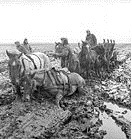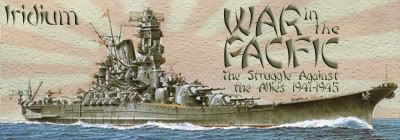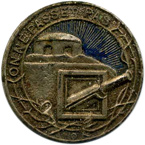Rasputitsa
Posts: 2903
Joined: 6/30/2001
From: Bedfordshire UK
Status: offline

|
quote:
ORIGINAL: turkey
This is an iteresting thread, with much discussion of the impact of the RN in a theoretical Nazi attack on the UK. Had the Nazi's achived air superiority over the UK, even then I'm not sure that they would have stopped the RN, after all they couldn't stop the RN (and many other civilian craft) evacuating 338,000 (200,000 British the rest French) allied troops from under the Luftwaffe air umberella at Dunkirk back to the UK. If the RN would commit to rescuing the army (not normally high on the RN list of priorities) I suspect they would have committed more seriously to the defense of their beloved bases on the south coast. Also even with only light weapons 338,000 men is a considerable force, now cornered and fighting for their homes. Would this have been suicide for the RN? I suggest not - Dunkirk wasn't and I suspect Sealion would have been a killing field for the RN which at the time in the area had 9 battleships to 3 Nazi (4 if you include Tirpitz, ready for war duty Sept 41), 3 RN carriers, about 35 RN cruisers to 7 and 90 plus destroyers to 22.
Also worth mentioning the Comonwealth and Empire troops that answered the call to Britain from as early as 1939 and would have been available to fight an invasion as very few of these were deployed to defend France (i think 1 Brigade of the Candian 1st Division deployed to the continent, but was immediately recalled to the UK). Also worth mentioning the geography of the southern UK, totally unsuited to tanks and Blitzkreig (un;like northern France and the LOW Countires) with several east-west lines of hills, the most southerly with steep south facing slopes, extensively wooded and only narrow lanes with high banks which would have made widespread break out from south coast beach heads tricky except on few well defined and therefore defended routes. Lastly these hills were fortified by the GHQ Defensive line of bunkers and gun emplacements running from Bristol in the west to a point SE of London and north, running to the east of London to the coast near Norwich in the north. Consiting of concrete gun emplacements (mostly anti tank) and infantry pill boxes with preponderance of light (Bren) and medium (Vickers .303 water cooled for sustained fire) machine guns and suported by extensive infantry field works, minefields, anti tank obstacles, including the canals and river that lace southern England it would have been a hard job for the Wehrmacht. But the simple fact is that the Luftwaffe couldn't acheive superiority over even the most southern reaches of the UK and this was due mostly to the limitations of their equipement, short range of Me 109 fighters, ineffectiveness of long range Me110 fighters and lack of heavy bombers, and by the unanticipated effect of the UK radar defences.
I agree the Hitler factor did effect the Battle of Britain in favour of the RAF (switch to bombing London) but as the RAF started bombing German cities, politcally, could he do anything else? And on the Hitler Effect, even had the south coast airfields been destroyed, the Me109 didn have the range to escort bombers beyond London (and only just to London with IIRC max 5 minutes over target) so it would have been prohibitively expensive (and almost certainly ineffective) to try and suppress the RAF on the midland airfields so the RAF would still have been able to fly LRCAP over the southern airfields and bridgeheads bomb the bridge heads, even had they lost the Battle of Britain.
So, the Wehrmacht battles its way ashore at the cost of many casualities, many many landing barges and transports sunk along with most of the combat ships sent to support them, plus masive Luftwaffe casualities. Would they have any way to maintain supply to the beaches? I suspect not. The "issue" of the RN is still not decided, neither have the RAF been prevented from flying from midland airfields to interdict resupply by air. All in all I suspect if the Wehrmacht High Command thought it was a bad idea, then it was. Lets face it, they didn't lack "morale fibre" they launched Barbarossa June 41 when a less corrageous bunch of people might of taken the softer option of Sealion.
On D-Day the allies put ashore 160,000 men, (6 or 7?) Inf Div, 3 Airborne Div and 3 Armoured brigades plus the 79th Arm Div (Hobarts Funnies). The allies used 1,213 warships, 4,126 purpose built landing craft, 736 ancillary craft and 864 merchant vessels. To supply them they had PLUTO and the 2 Mulberry harbours plus (massive) merchant shipping. Facing them they had (at first) 4 inf divisions, (so not far off what the British could have mustered in 1940/41) with 1 Inf Div in reserve and 1 Armoured Div at Caen (which was not deployed until too late (Hitler effect)). The Germans had no armor in the Sealion assault waves and armour was deemed crucial to the D-Day success and more importantly they had nothing we would recognise as assault landing craft, let alone the specialist fire support vessels or naval bombabrdment capacity that the allies could bring to bear in Normandy.
I would be up for playing the UK in a game which reflected these factors in a post Dunkirk scenario. Bring it on.
Agree with almost all of the above, except operating from 12 Group airfields like Duxford is not even LRCAP, they would need that distance to climb to height and it would be a convenient start point. The RAF would only have to wait 5 mins for the Bf 109s to go home, then cut the Bombers to pieces. All the Luftwaffe could do would be to send waves of fighters, timed for each giving 5 mins over target, but how long could that go on. Any error in timing and the bombers get it, meanwhile the British have the radar and the Observer Corps to watch for the gaps.
12 Group were desperate to get into 11 Group's battle, therefore, the Luftwaffe never saw all of Fighter Command until near the end.

|
 Printable Version
Printable Version
















 But personal attacks are the sign of lack of arguments usually, so I won't complain.
But personal attacks are the sign of lack of arguments usually, so I won't complain.

 )
) 

 New Messages
New Messages No New Messages
No New Messages Hot Topic w/ New Messages
Hot Topic w/ New Messages Hot Topic w/o New Messages
Hot Topic w/o New Messages Locked w/ New Messages
Locked w/ New Messages Locked w/o New Messages
Locked w/o New Messages Post New Thread
Post New Thread